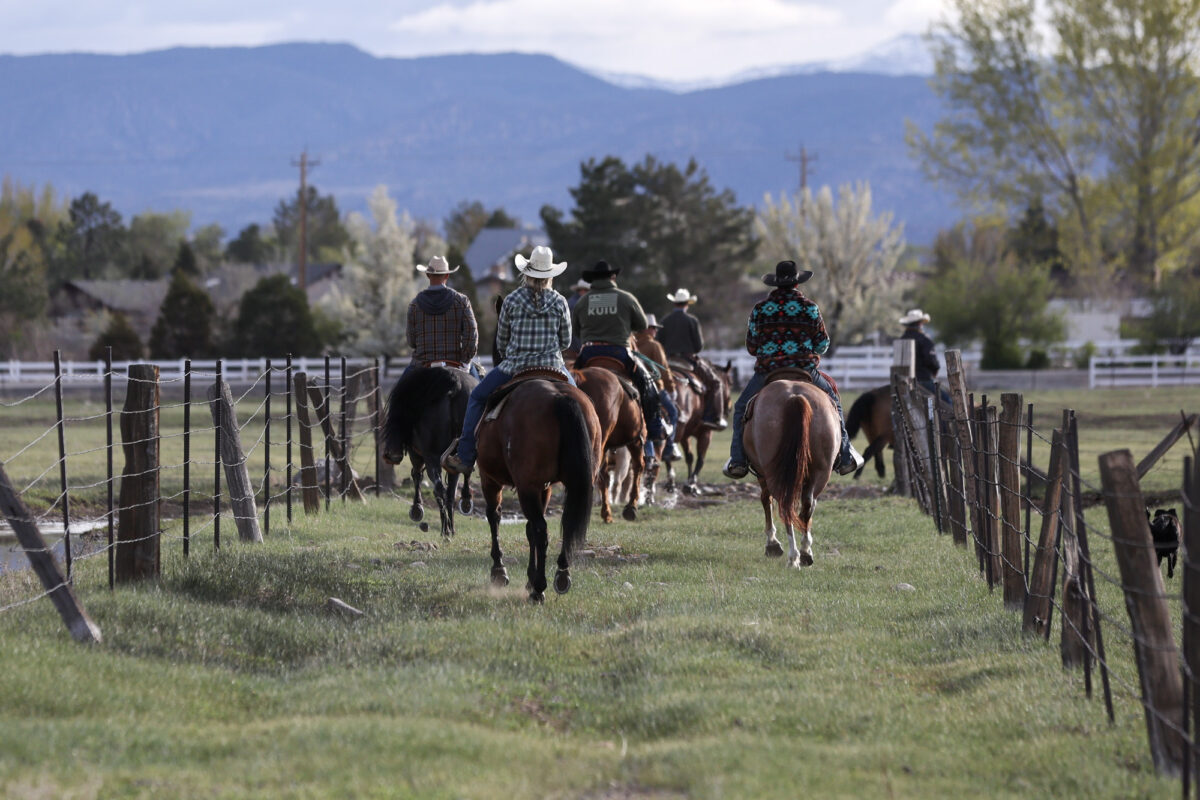Like its mining and geologic prowess, Nevada’s ranching roots run far and wide throughout the Silver State—there are few places it can be more powerfully felt than Carson Valley.
Nestled in the high desert at the foothills of Lake Tahoe and only an hour south of Reno, from Western frontiersmen, to American Dreamers, the story of Nevada’s oldest town, rugged ranching empires, Nevada Basque and far beyond, it’s only in Carson Valley where you’ll discover some of the Silver State’s most lasting ranching and Western legacies.
You see, back when Virginia City’s Comstock Lode silver cache was discovered more than 150 years ago, it prompted the development of Carson City (Nevada’s capital city) and nudged the Nevada Territory into statehood at once. A booming economy and an official capital was great and all, but this massive influx of folks in the northern Nevada region—prospectors, pioneers following the California Trail West, and an enormous localized population boom—needed a reliable way to source produce, meats, and vegetables. Oysters and champagne were wonderful for Comstock millionaires, but for the rest of the folks living and working the region, they needed something a little more practical. And, at the foot of one of the most rugged mountain ranges in the country, getting up and over the Sierra Nevada proved difficult but proved impossible altogether on a routine basis. Lucky for all those American Dreamers who settled into the region, Carson Valley saved the day as the breadbasket to the Comstock, whose first Western frontiersmen set up ranching empires ready to serve pretty much all of northwestern Nevada. And the rest? Well the rest is history.
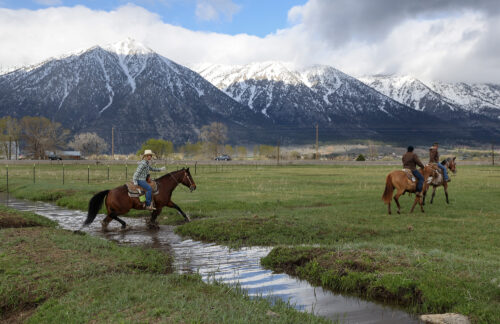 Set against the Eastern Sierra Nevada, Carson Valley has an unusual lushness not found in most other places in Nevada’s Great Basin Desert. Here, perennial creeks and streams flow all 12 months of the year, capturing runoff from towering peaks and diverting them into century-old ranches that behold some of the oldest structures in the state. Carson Valleyans knew a good thing once they’d discovered it, and today we’re lucky enough to be able to experience their legacies first hand through photography tours and special events at a series of some of the oldest barns and ranching estates in Nevada, the personality-packed reliability of Genoa (Nevada’s oldest town) and all that comes with it, Nevada’s unmistakable Basque identities, and maybe even a rodeo or two.
Set against the Eastern Sierra Nevada, Carson Valley has an unusual lushness not found in most other places in Nevada’s Great Basin Desert. Here, perennial creeks and streams flow all 12 months of the year, capturing runoff from towering peaks and diverting them into century-old ranches that behold some of the oldest structures in the state. Carson Valleyans knew a good thing once they’d discovered it, and today we’re lucky enough to be able to experience their legacies first hand through photography tours and special events at a series of some of the oldest barns and ranching estates in Nevada, the personality-packed reliability of Genoa (Nevada’s oldest town) and all that comes with it, Nevada’s unmistakable Basque identities, and maybe even a rodeo or two.
Discover the Legacy of the Dangberg Empire
Betcha didn’t know Minden’s whole story began with one guy, but it’s true! Minden, and the development of Carson Valley all started with H.F. Dangberg, a German emigrant who, like a lot of the region’s first residents, arrived on their way to the California gold fields. At first Dangberg stopped to see if he could pick up this mining thing. After quickly realizing there wasn’t too much to love there, he decided he could earn more money making and selling butter to westward pioneers, using Carson Valley as their final resting place before the final trek over the Sierra.
Through the almost instant success of his butter sales, he slowly began acquiring more and more land in what would become Minden. He did all kinds of incomprehensibly important things, like hand digging most of Carson Valley’s irrigation ditches that are still in use today, for example. Eventually, the V&T Railroad wanted to expand its rail line down into Carson Valley, and while a newly founded Gardnerville really wanted the V&T Depot to connect into their town, Dangberg donated a bunch of his own land to be used for a depot, and for free, which led to the development of Minden.
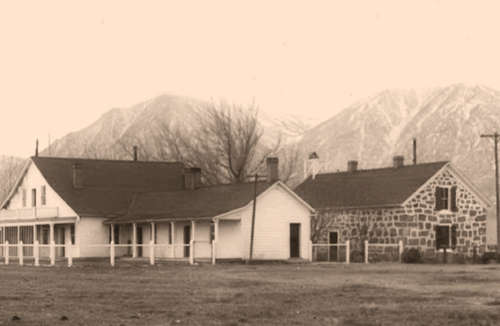 Along the way, his descendants grew up to lead some truly incredible lives—one of his daughters married the man who developed the Ferris Wheel (an invention Dangberg helped fund,) another daughter basically went on to be a fiercely independent globe-trotting woman who was far ahead of her time, and another married a traveling minister who built the Little Church of the Crossroads in Lamoille, NV (Dangberg also flipped the bill on the stained glass inside the church, which you can still see to this day.)
Along the way, his descendants grew up to lead some truly incredible lives—one of his daughters married the man who developed the Ferris Wheel (an invention Dangberg helped fund,) another daughter basically went on to be a fiercely independent globe-trotting woman who was far ahead of her time, and another married a traveling minister who built the Little Church of the Crossroads in Lamoille, NV (Dangberg also flipped the bill on the stained glass inside the church, which you can still see to this day.)
The V&T Railroad did extend its rail line down to Carson Valley with a depot in a newly formed Minden, which was also one of the very first master-planned communities in America, if you can believe it. Here, a gorgeous downtown was formed surrounding Esmeralda Street, which included a big city park with surrounding master planned homes and streets, a civic center, banks, saloons, the Dangberg Hotel, a flour mill and creamery, and far beyond. Back in those days Dangberg was a hero, having created something truly amazing out of nothing, but somewhere along the way a few of his sons got mixed up and either gambled their business shares away, upset the locals, or both.
Almost all of what Dangberg funded and developed still exists in Minden—you can see it all on full display and still in use in downtown Minden today—yet you’ll find almost no signs of their name credited anywhere. His legacy is absent except for a historical placard at Minden Park, and one solo “D” that quietly hangs over the old Farmers Bank of Carson Valley (now offices.) Only the trained eye (and mind) will know the Dangberg legacies in downtown Minden, everywhere except his ranching empire: The Dangberg Ranch.
This historic ranch, The Dangberg Home Ranch Historic Park, is a non-profit and open for public tours, which details the lives of H.F. Dangberg and his descendants through a thoughtful collection of artifacts and stories—like some of the very first Levi’s coveralls, ever, and an unforgettable tale of how two women became infatuated with generations of pet skunks. See the Dangberg Ranch, which is open and available for tours all year long, and make sure to check out their calendar of events for the Dangberg Summer Festival, which hosts everything from kite festivals, to historical chautauqua presentations, live music, and far beyond.
Meet Genoa, NV: Nevada’s Oldest Settlement
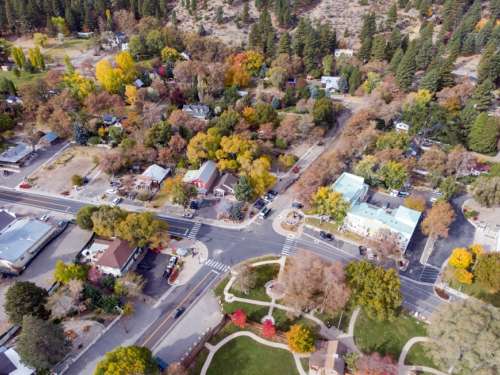 Is there a truer Nevada rite of passage than experiencing Nevada’s Oldest Settlement? Didn’t think so. Genoa, NV isn’t just where Carson Valley’s story first began, but it’s the place the entire Nevada story is born from, dating all the way back to the 1840s, when a community first began forming. By 1850, following the Mexican Cession, Mormon settlers dominated the encampment and built a trading post called Mormon Station, which consisted of a roofless log enclosure and corral they used as a trading post. With so many pioneers passing through the region on their way to the California gold fields (a whole decade ahead of the Comstock Lode silver bonanza in Virginia City that would beckon them right back over the Sierra), almost everyone passing through the region would stop at the reliably stocked Mormon Station for tobacco, meat, canned goods, coffee, beans, sugar, flour, bacon, and other supplies they needed to get up and over the rugged Eastern Sierra and into California.
Is there a truer Nevada rite of passage than experiencing Nevada’s Oldest Settlement? Didn’t think so. Genoa, NV isn’t just where Carson Valley’s story first began, but it’s the place the entire Nevada story is born from, dating all the way back to the 1840s, when a community first began forming. By 1850, following the Mexican Cession, Mormon settlers dominated the encampment and built a trading post called Mormon Station, which consisted of a roofless log enclosure and corral they used as a trading post. With so many pioneers passing through the region on their way to the California gold fields (a whole decade ahead of the Comstock Lode silver bonanza in Virginia City that would beckon them right back over the Sierra), almost everyone passing through the region would stop at the reliably stocked Mormon Station for tobacco, meat, canned goods, coffee, beans, sugar, flour, bacon, and other supplies they needed to get up and over the rugged Eastern Sierra and into California.
The post was abandoned and reclaimed a few times, and eventually included a post office and blacksmith shop, along with a sawmill. By 1851, the Mormon Station became a permanent trading post-style settlement—the first permanent settlement in all of the Nevada Territory. It was during this time some of the region’s most lasting (iconic!) businesses sprung to life, including the Genoa Thirst Parlor, Nevada’s Oldest Bar to this day (built in 1853), and Walley’s Hot Spring Resort (built in 1862.)
And, to tell you the truth, not much has changed in Genoa throughout the last century-and-a-half, in the most wonderful way. You can still visit Mormon Station, which is now a Nevada State Park at Mormon Station State Historic Park, sip one of those world-famous Bloody Mary’s from across the same wooden bar counter that’s always been there at the Genoa Bar, and slide into the thermal waters of one of the oldest hot spring resorts in Nevada borders, flowing now the same as they always have.
While you’re admiring Genoa’s sprawling Victorian-style estates, don’t forget that the Pony Express rode right through Genoa, on to Markleeville, and up and over the Sierra. Their time is immortalized here a few different ways, especially when it comes to local legend Snowshoe Thompson who delivered Pony Express-intended mail over the Sierra Nevada mountains when snowy conditions were too treacherous for the Pony Express to ride. He delivered the mail, transported crucial supplies like medicine Genoa locals wouldn’t otherwise have access to during wintry conditions, and put his life on the line more times than anyone today will ever know, which all goes to say his work was never recognized or even acknowledged by the U.S. Postal Service. Learn more about his story, how the Candy Dance began here, Ben Palmer’s story, and far beyond at the Genoa Courthouse Museum, open seasonally.
Discover Nevada Basque: Indulge in Strong Drinks & Garlic-Loaded Everything at JT Basque
![]() Along with Dat So La Lee, one of Nevada’s most esteemed woven basket makers, and Ben Palmer, a Missouri slave who purchased their freedom and settled in Carson Valley as one of the region’s first and most iconic cattlemen, understanding Carson Valley’s Western roots means connecting with many cultures that shaped its story. Learn their stories more intimately at the Carson Valley Museum in downtown Gardnerville, but we’d like to believe there’s no better way to soak up some history than through your appetite.
Along with Dat So La Lee, one of Nevada’s most esteemed woven basket makers, and Ben Palmer, a Missouri slave who purchased their freedom and settled in Carson Valley as one of the region’s first and most iconic cattlemen, understanding Carson Valley’s Western roots means connecting with many cultures that shaped its story. Learn their stories more intimately at the Carson Valley Museum in downtown Gardnerville, but we’d like to believe there’s no better way to soak up some history than through your appetite.
Located in the heart of downtown Gardnerville, make sure a visit to JT Basque is part of your Carson Valley agenda. Here, you’ll not only have access to one of the oldest restaurants in all of Carson Valley (the building was moved on timbers from up in Virginia City many decades ago), but you’ll have the chance to indulge in Old Country recipes, served by their descendants. While so many cultures make up Nevada and the American West’s identity, one of the Silver State’s most hearty cultures is Nevada Basque, who came to the high desert from the Spanish and French Pyrenees as sheepherders. While the men tended to their flocks in Nevada’s mountainous terrain most months of the year, they would eventually need to return to town to stock up on supplies and regain a sense of community, which they reliably found in Nevada Basque Boardinghouses. Here, they would do everything communally, from sleeping in bunk-style beds, to games, drinking, and dining.
A handful of these Basque Boardinghouses remain across northern Nevada to this day, but depending on who you ask, JT Basque remains the most famous, honoring their Basque roots most authentically with the meals and drinks served just the same as they always have. One famous Basque dish to try is the garlic-loaded lamb chops served with mint jelly, or really go for it and order a garlic-loaded steak. No matter which main entree you land on, count on sitting family style at a large table with plenty of other culture-curious Carson Valley road trippers, where you’ll share salad with beans, stew, french fries, daily vegetable soup, and plenty of flowing red table wine. While you’re here, don’t forget to sample the Unofficial State Drink of Nevada—the Picon Punch. Just remember the old adage, one is not enough and three is too many.
The Historic Barn HQ of the Silver State
If there are two things Carson Valley is known for, it’s unquestionably wide open spaces with unending views of the Eastern Sierra, and some of the oldest, most spectacularly beautiful historic ranches in Nevada borders. Presenting a type of authenticity that can’t be bought, there are all kinds of ways to experience these beautiful barns first hand, no matter when you plan your trip.
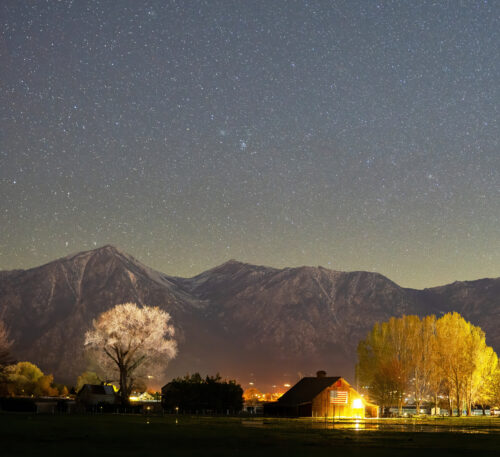 Starting in January, Carson Valley’s beloved Eagles and Agriculture event returns right along with the Valley’s reliably returning eagle population, who flock to Carson Valley as their southernmost stop along their winter migratory routes. And, uniting wildlife photography and history unlike any place else, Carson Valley has devoted this annual winter time celebration to studying resident and migrating birds, who tend to roost in these fascinating historic structures found across the valley. Get yourself signed up for an exclusive Historic Barn Tour that provides access to some of the Valley (and Nevada’s!) oldest structures—which means seeing and experiencing places that aren’t ordinarily open for visitors.
Starting in January, Carson Valley’s beloved Eagles and Agriculture event returns right along with the Valley’s reliably returning eagle population, who flock to Carson Valley as their southernmost stop along their winter migratory routes. And, uniting wildlife photography and history unlike any place else, Carson Valley has devoted this annual winter time celebration to studying resident and migrating birds, who tend to roost in these fascinating historic structures found across the valley. Get yourself signed up for an exclusive Historic Barn Tour that provides access to some of the Valley (and Nevada’s!) oldest structures—which means seeing and experiencing places that aren’t ordinarily open for visitors.
In spring, make sure you’ve got your camera along for the ride and get registered for a wildlife photography tour in Carson Valley. Offering some of the only regularly offered wildlife photography tours in all of Nevada, an afternoon with the pros means seeing and experiencing Carson Valley wildlife (with a wildlife-first approach), who live and migrate through some of Genoa and Minden’s oldest barns and structures.
Later on in the summertime, so many of Carson Valley’s historic barns and ranches are up for rent for special events, like family reunions and weddings. In Genoa, stay at the White House Bed & Breakfast, and be sure to admire the Genoa Orchard House and Genoa Community Church while you’re in town. Over in Minden, some of the more famously picturesque available-for-rent historic properties include Minden’s Park Home Ranch Venue, Jacobs Berry Farm, and of course the Dangberg Ranch, too.
Douglas County Rodeo
What better way to experience Western thrills than participating in tradition in action? Carson Valley’s got plenty of action-packed events to keep the region’s far-and-wide Western legacies going all year long, like Genoa Western Heritage Days (April), Backcountry Music Festival (June), and Genoa Candy Dance (September). But back and returning for its second year, don’t miss the Douglas County Rodeo & Concert (September) featuring extreme bull riding, team roping, barrel racing, girls trick riders, mutton busting, riata ranch cowboy, bronc riding, world-class vendors, food trucks, bounce houses, and much more. Find the Douglas County Rodeo Fairgrounds in the heart of Gardnerville, NV. Ready for tickets? Get yours right here.
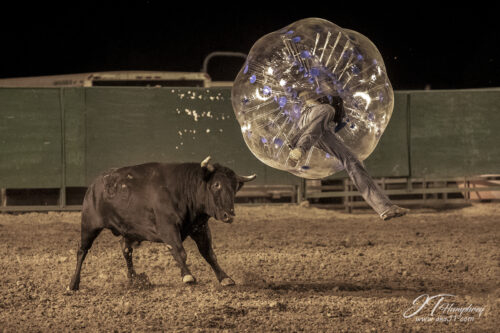
To learn more about the history of the Carson Valley, click here. To sign up for or bi-monthly newsletter, click here.
